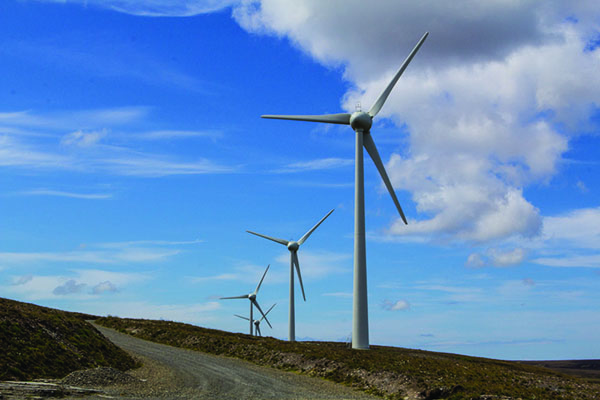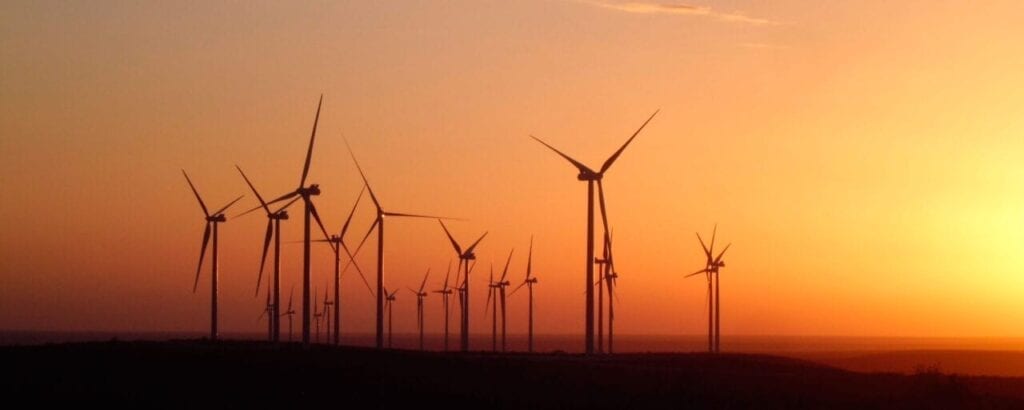Map Shows ‘Low-Impact’ Locations for Wind Power
The post Map Shows Low-Impact' Locations for Wind Power appeared first on POWER Magazine.

A global environmental group that works to protect land, water, and wildlife said states in what it considers the U.S. wind belt" can develop wind power generation to meet renewable energy goals without presenting a significant risk to surrounding areas.
An analysis from The Nature Conservancy, focused on the central U.S. where there is vast potential to generate wind power, said 17 states have land available to site wind projects that would create high energy output, with low impact to wildlife or risk of encroaching on protected lands.
The Site Wind Right (SWR) analysis, published by the environmental group in early July, includes a map that shows developers where wind projects can be sited with the least impacts to people and wildlife, and with environmental conservation in mind.
We have worked with industry and state and federal agencies throughout the course of developing Site Wind Right, including discussions with the American Wind and Wildlife Institute and the American Wind Energy Association (AWEA), as well as with individual developers," Mike Fuhr, director of The Nature Conservancy of Oklahoma, told POWER. Fuhr is the chief sponsor of the group's research.
This conversation continues even after the release of SWR," Fuhr said. Recently, Site Wind Right was given an award for advancing climate science by the America Fish and Wildlife Association. In addition, local chapters of the Conservancy have worked closely with state agencies during the development and review of the data that went into the analysis and associated maps."
Challenges for Wind Power DevelopmentWind energy developers both onshore and offshore face numerous challenges. Concerns about noise from wind turbines, disruption of visual aesthetics, and danger to wildlife have led to the cancellation or delay of several projects in recent years.
The group's analysis focused on finding land with high wind energy potential, but where impacts would be low to wildlife and the surrounding land. The Nature Conservancy partnered with organizations in each of the 17 states it studied, and gathered more than 100 data sets from conservation and land use organizations as well as state agencies. The group said more than 60 scientists worked to develop the siting map, with an eye toward helping developers avoid unsuitable sites.
We are often contacted for feedback about projects already underway or to inquire about the data layers included within SWR," said Fuhr. We do not, as a general practice, advise companies on individual project design but we do encourage them to use SWR, the multi-party Wind Energy Guidelines, and other relevant science to make responsible siting and project design decisions."
The Site Wind Right project originated in Kansas in 2011, when researchers led by one of The Nature Conservancy's directors wrote a paper looking at how wind energy in Kansas could be developed without endangering important ecological sites. The group notes that there are 4.4 million acres of land available for wind power development in Kansas, the third-largest development area in the nation, behind Texas and Iowa.
Texas leads the U.S. in wind power generation, producing about a quarter of the nation's wind energy. AWEA said recently that if Texas were a country, it would trail only China, the U.S. as a whole, and Germany and India in wind energy output.
 Texas leads the nation in wind power generation, producing about a quarter of all U.S. output thanks to installations such as the Anacacho Wind Farm in Kinney County. Courtesy: E.ON Lessening Impact on Nature
Texas leads the nation in wind power generation, producing about a quarter of all U.S. output thanks to installations such as the Anacacho Wind Farm in Kinney County. Courtesy: E.ON Lessening Impact on NatureThe Nature Conservancy estimates that renewable energy development could affect 76 million acres of land in the United States, or an area about the size of Arizona. The group said its analysis shows projects can be sited to lessen the impact on both nature and surrounding communities.
A Department of Energy-funded study published in October 2019 by the Lawrence Berkeley National Laboratory in Berkeley, California, found that 57% of people who lived within 5 miles of a wind turbine were either positive or very positive about them; just 8% said they had negative or very negative opinions of nearby wind projects.
The group's analysis said locations not suitable for wind power development include those with unique ecosystems, government-protected lands, and areas with protected wildlife species. It also singled out developments that might fragment local wildlife. It noted proximity to large cities, and engineering constraints due to topography, were also detrimental to development.
Katie Umekubo, a senior attorney with the Natural Resources Defense Council, in a news release said of the analysis: We need more resources like this to speed up our move away from burning fossil fuels. Well-sited wind energy allows us to meet our climate goals, advances conservation, and ensures that we avoid irreversible environmental impacts."
Utilities Using AnalysisEvergy, headquartered in Topeka, Kansas, and Kansas City, Missouri, is among the utilities utilizing the analysis to develop its wind power projects. The investor-owned utility, created by the merger of Westar Energy and Kansas City Power & Light in 2018, earlier this year announced it would add 660 MW of wind power to its portfolio, utilizing four new wind energy sites as an incentive to retain and attract large commercial and industrial power users in its service territory.
Terry Bassham, Evergy's CEO, said, Site Wind Right is an invaluable resource that helps us avoid unnecessary impacts to the wildlife and iconic landscapes of the Great Plains, while also allowing us to provide clean, low-carbon energy for our customers." Evergy in January of this year announced a commitment to achieve an 80% reduction in carbon dioxide emissions below 2005 levels from its fleet of power plants by 2050. The plan includes retiring all its coal-fired units-except for one unit in Missouri-by 2050. The company also plans to close the Wolf Creek Nuclear Station when the plant's operating license expires in 2045.
Achieving the wind energy development necessary to meet our climate goals will require more than quadrupling current wind capacity in the United States by 2050," said Fuhr. Most new onshore wind development will occur in the Great Plains, home to some of the nation's most promising wind resources. The Great Plains also provide our best remaining grassland habitat in North America, and the unique wildlife that is home on this range, such as bison, pronghorn antelope, deer, and prairie chickens; these grasslands were the impetus for the development of SWR."
Fuhr told POWER that while the Site Wind Right analysis looks only at onshore wind projects, we are developing similar analyses for offshore wind development," which is growing along the nation's coastlines.
Offshore wind energy will play an increasingly important role for meeting climate goals, especially along the Northeast and Mid-Atlantic coasts, and possibly along the Pacific coast as floating turbine technologies advance," Fuhr said. As with onshore wind, there are potential environmental risks from offshore turbines, especially migrating whales, seabirds, and acoustic impacts to marine life from turbine construction."
A coalition of East Coast fishermen and seafood businesses has called for a five-year moratorium on all offshore wind power development in that region. The groups have asked the Bureau of Ocean Energy Management to delay approval of a supplemental environmental impact statement for the 800-MW Vineyard Wind project proposed off southern New England, at least until the agency addresses the coalition's concerns.
-Darrell Proctor is associate editor for POWER (@DarrellProctor1, @POWERmagazine).
The post Map Shows Low-Impact' Locations for Wind Power appeared first on POWER Magazine.